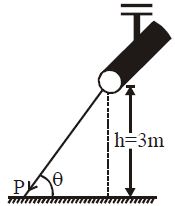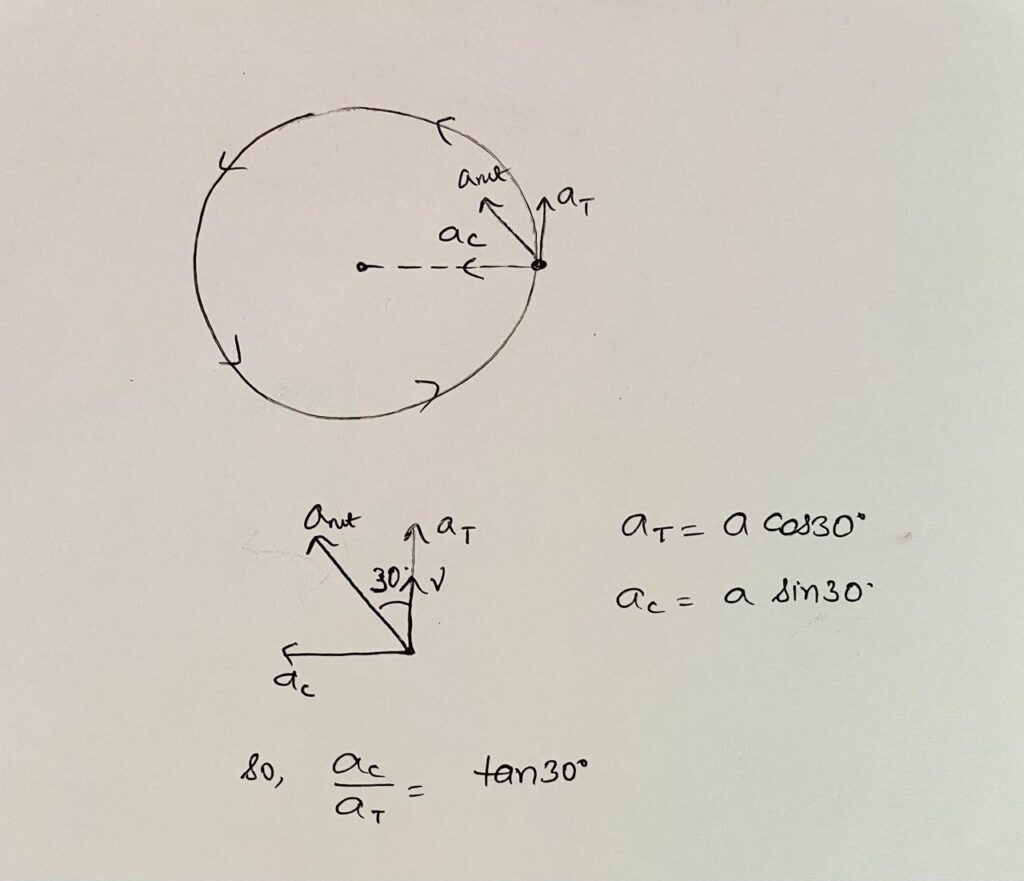A point on the periphery of rotating disc has its acceleration vector making on angle 30° with velocity vector then the ratio of magnitude of centripetal acceleration to tangential acceleration is :
Kinematics of Circular Motion
A stone is moved round a horizontal circle with a 20 cm long string tied to If centripetal acceleration is 9.8 m/s2, then its angular velocity will be :
Solution:
Centripetal Acceleration is given by a= ω²R
⇒ 9.8 = ω²× 1/5
⇒ ω² =49
⇒ ω = 7 rad/sec
A block on a stationary horizontal table with increasing speed in a circle is seen from an inertial frame of reference. The angle between net force on the block and velocity vector is :
Solution:
When net acceleration makes acute angle with velocity, speed of the particle will increase. As tangential accleration is positive, speed will increase.
A wheel is subjected to uniform angular acceleration about its axis. Initially its angular velocity is zero. In the first 2 sec, it rotates through an angle θ1; in the next 4 sec, it rotates through an additional angle θ2. The ratio of θ2/θ1 is :
Solution:
For Circular motion angle traversed is θ = ω t + ½ α t²
so, θ1 =½α(2)² = 2α
and θ1 + θ2 = ½α(6)² = 18 α ⇒ θ2= 16 α
so θ2 /θ1= 8
A wheel having diameter of 3 m starts from rest and accelerates uniformly to an angular velocity of 210 rpm in 5 seconds. Angular acceleration of the wheel is :
The angular velocity of earth about its axis of rotation is :
A spot light S rotates in a horizontal plane with a constant angular velocity of 0.1 rad/s. The spot of light P moves along the wall at a distance of 3 m. The velocity of spot P when θ = 45° is :-
No solution provided for this question.
At t = 0 a wheel is rotating at 50 rad/sec. A motor gives it a constant angular acceleration of 5 rad/sec2 until it reaches 100 rad/sec the motor is disconnected how many revolutions are completed at t = 20 sec
Solution:
ω = ω 0 + α.t
⇒ 100 =50 + 5 × t
⇒ 50 = 5.t
⇒ t = 10 sec.
Angle traversed during acceleration= ½.α.t²= ½×5×(10)²= 250 rad
Angle traversed with constant angular speed = ω.t= 100 × 10 = 1000 rad
Total angle traversed = 1250 rad
Number of Revolutions = 1250 /2π= 625 /π
